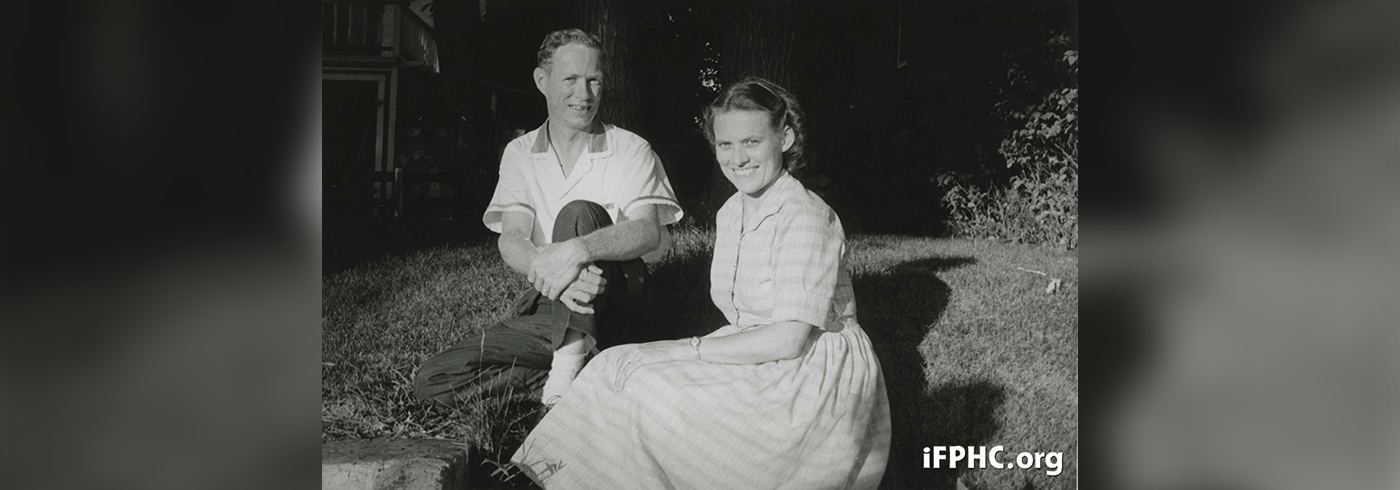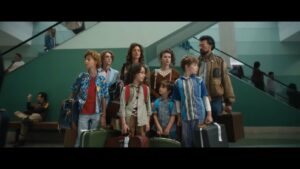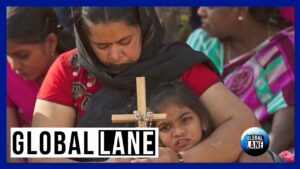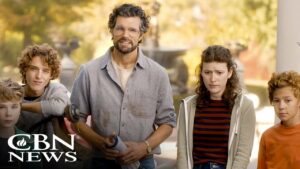This Week in AG History — May 25, 1975
 Calvin and Marian Olson’s missionary work in what was once East Pakistan — now Bangladesh — resulted in their visas not being renewed because “they were converting too many people.”
Calvin and Marian Olson’s missionary work in what was once East Pakistan — now Bangladesh — resulted in their visas not being renewed because “they were converting too many people.”
Calvin (1924–2000) and Marian (1924-2005) Olson were both single missionaries to East Pakistan and India when they met in 1954. Their friendship soon led to a marriage and ministry that lasted 44 years, through catastrophic natural disasters, deathly illnesses, a civil war, and the loss of their only child. Their steadfastness, despite obstacles, left a legacy of a thriving national church in the largest city of the nation of Bangladesh.
In 1757, the British East India Company began colonizing the area of Bengal in the eastern part of India. This rule lasted until India won its independence from Great Britain in 1947 and Bengal was separated from India and became known as East Pakistan, part of the newly formed state of Pakistan. East Pakistan was separated from West Pakistan by more than 1000 miles of Indian territory – as well as by language and culture, with Islam as their unifying religion.
This formation led many American missionaries to move to India and Pakistan in the 1950s, including Calvin Olson, a World War II veteran, and recent graduate of North Central Bible Institute in Minneapolis, Minnesota (now North Central University). Arriving in East Pakistan in 1954, it was suggested that he attend a missions conference in Landour, India. It was there he met Marian Midgett, a graduate of Eastern Bible Institute (now Valley Forge University in Phoenixville, Pennsylvania) and nursing school at Booth Memorial Hospital in New York City. Marian had been serving in India for almost five years when she joined Calvin in East Pakistan after their marriage in 1955.
Together they settled down in Dhaka, East Pakistan to learn the Bengali language. Toward the end of their studies, they were in an accident in a ricksha that caused Marian to go into premature labor giving birth to a stillborn baby daughter, the only child the Olsons would ever have.
During their first years as missionaries, they set up a reading room, with a library and bookstore. Using this as a base, they planted a church in Gopalganj, which they soon turned over to a national pastor. During this time, Marian, after nursing many during a cholera outbreak, came very close to death herself from the deadly disease. Many prayers were offered and she soon experienced a full recovery.
In 1969, the Olsons returned to the capital of Dhaka to assist in the building of an evangelistic center. God blessed the ministry there greatly and weekly testimonies poured in of salvations, healings, and miraculous provision among the Christians of their city. But on Thursday, Nov. 12, 1970, East Pakistan faced the catastrophic devastation of a cyclone with winds blowing up to 150 miles per hour. Entire villages were flattened. It took many weeks to bury the dead. Calvin and Marian, along with other missionaries, including Howard Hawkes and Jerry Parsley, began building homes and rebuilding lives alongside their congregants and neighbors.
Just one month after the devastating cyclone, the national elections of Pakistan were accompanied by refusal to accept its results leading to violent demonstrations and strikes. As the tensions between East Pakistan and West Pakistan escalated, the Olsons awoke on March 25, 1971, to the sound of automatic gunfire. The capital was soon ablaze with the beginning of what was later termed as “the Bangladesh genocide,” an attempt to crush the Bengali liberation movement of the east.
Coming so soon on the heels of the deaths of tens of thousands from natural disaster, the suffering from war was incalculable. The young church began to hold four Sunday services in three languages – English, Bengali, and Urdu – to minister to the people who were flocking to them for help amidst the chaos and confusion.
After a nine-month long war, East Pakistan emerged as the People’s Republic of Bangladesh. The newly created country experienced extreme poverty, political unrest, and natural calamity in its early existence, but the church was there through the difficult journey.
In 1975, the Pentecostal Evangel published an article in its May 25 issue announcing the dedication of the 700-seat Dacca Evangelistic Center. J. Philip Hogan, executive director of the Division of Foreign Missions (now Assemblies of God World Missions), preached the dedicatory sermon, saying that the church “situated on a miracle plot and paid for by a series of fiction-like miracles stands as the harbinger of the new day of evangelism that has dawned in Bangladesh."
Five years later, the Olsons turned the church over to their assistant, Pastor Asa Kain. In 1989, Calvin and Marian were given the news that their visas would not be renewed. The reason given was that “Mr. Olson has been converting too many people.” While they were heartbroken to leave the country, they knew that the national pastors were very capable of continuing the work.
Today the Dacca Evangelistic Center that the Olsons founded is thriving. It is home to two churches, a Christian school, media and correspondence ministries, a street kids' program, and the offices of two church and social development organizations. The Center continues to be home to Dacca Assembly of God, which the Olsons so lovingly shepherded, with the church remaining active in many ministries affecting the lives of thousands of people.
Read the article, “Dacca Evangelistic Center is Dedicated,” on page 28 of the May 25, 1975, issue of the Pentecostal Evangel.
Also featured in this issue:
• “Yes, I Am Secure,” by Ruth Vaughn
• “The Great Tribulation,” by Ian Macpherson
And many more!
Click here to read this issue now.
Pentecostal Evangel archived editions courtesy of the Flower Pentecostal Heritage Center.
In 1757, the British East India Company began colonizing the area of Bengal in the eastern part of India. This rule lasted until India won its independence from Great Britain in 1947 and Bengal was separated from India and became known as East Pakistan, part of the newly formed state of Pakistan. East Pakistan was separated from West Pakistan by more than 1000 miles of Indian territory – as well as by language and culture, with Islam as their unifying religion.
This formation led many American missionaries to move to India and Pakistan in the 1950s, including Calvin Olson, a World War II veteran, and recent graduate of North Central Bible Institute in Minneapolis, Minnesota (now North Central University). Arriving in East Pakistan in 1954, it was suggested that he attend a missions conference in Landour, India. It was there he met Marian Midgett, a graduate of Eastern Bible Institute (now Valley Forge University in Phoenixville, Pennsylvania) and nursing school at Booth Memorial Hospital in New York City. Marian had been serving in India for almost five years when she joined Calvin in East Pakistan after their marriage in 1955.
Together they settled down in Dhaka, East Pakistan to learn the Bengali language. Toward the end of their studies, they were in an accident in a ricksha that caused Marian to go into premature labor giving birth to a stillborn baby daughter, the only child the Olsons would ever have.
During their first years as missionaries, they set up a reading room, with a library and bookstore. Using this as a base, they planted a church in Gopalganj, which they soon turned over to a national pastor. During this time, Marian, after nursing many during a cholera outbreak, came very close to death herself from the deadly disease. Many prayers were offered and she soon experienced a full recovery.
In 1969, the Olsons returned to the capital of Dhaka to assist in the building of an evangelistic center. God blessed the ministry there greatly and weekly testimonies poured in of salvations, healings, and miraculous provision among the Christians of their city. But on Thursday, Nov. 12, 1970, East Pakistan faced the catastrophic devastation of a cyclone with winds blowing up to 150 miles per hour. Entire villages were flattened. It took many weeks to bury the dead. Calvin and Marian, along with other missionaries, including Howard Hawkes and Jerry Parsley, began building homes and rebuilding lives alongside their congregants and neighbors.
Just one month after the devastating cyclone, the national elections of Pakistan were accompanied by refusal to accept its results leading to violent demonstrations and strikes. As the tensions between East Pakistan and West Pakistan escalated, the Olsons awoke on March 25, 1971, to the sound of automatic gunfire. The capital was soon ablaze with the beginning of what was later termed as “the Bangladesh genocide,” an attempt to crush the Bengali liberation movement of the east.
Coming so soon on the heels of the deaths of tens of thousands from natural disaster, the suffering from war was incalculable. The young church began to hold four Sunday services in three languages – English, Bengali, and Urdu – to minister to the people who were flocking to them for help amidst the chaos and confusion.
After a nine-month long war, East Pakistan emerged as the People’s Republic of Bangladesh. The newly created country experienced extreme poverty, political unrest, and natural calamity in its early existence, but the church was there through the difficult journey.
In 1975, the Pentecostal Evangel published an article in its May 25 issue announcing the dedication of the 700-seat Dacca Evangelistic Center. J. Philip Hogan, executive director of the Division of Foreign Missions (now Assemblies of God World Missions), preached the dedicatory sermon, saying that the church “situated on a miracle plot and paid for by a series of fiction-like miracles stands as the harbinger of the new day of evangelism that has dawned in Bangladesh."
Five years later, the Olsons turned the church over to their assistant, Pastor Asa Kain. In 1989, Calvin and Marian were given the news that their visas would not be renewed. The reason given was that “Mr. Olson has been converting too many people.” While they were heartbroken to leave the country, they knew that the national pastors were very capable of continuing the work.
Today the Dacca Evangelistic Center that the Olsons founded is thriving. It is home to two churches, a Christian school, media and correspondence ministries, a street kids' program, and the offices of two church and social development organizations. The Center continues to be home to Dacca Assembly of God, which the Olsons so lovingly shepherded, with the church remaining active in many ministries affecting the lives of thousands of people.
Read the article, “Dacca Evangelistic Center is Dedicated,” on page 28 of the May 25, 1975, issue of the Pentecostal Evangel.
Also featured in this issue:
• “Yes, I Am Secure,” by Ruth Vaughn
• “The Great Tribulation,” by Ian Macpherson
And many more!
Click here to read this issue now.
Pentecostal Evangel archived editions courtesy of the Flower Pentecostal Heritage Center.



